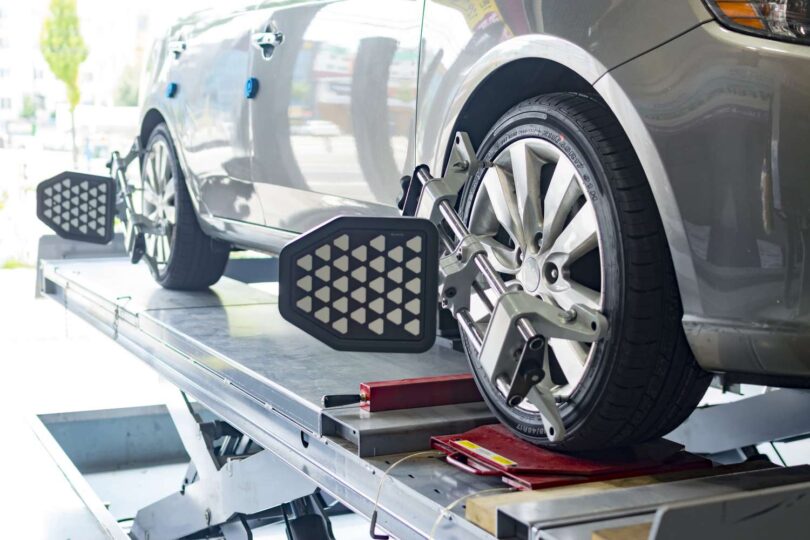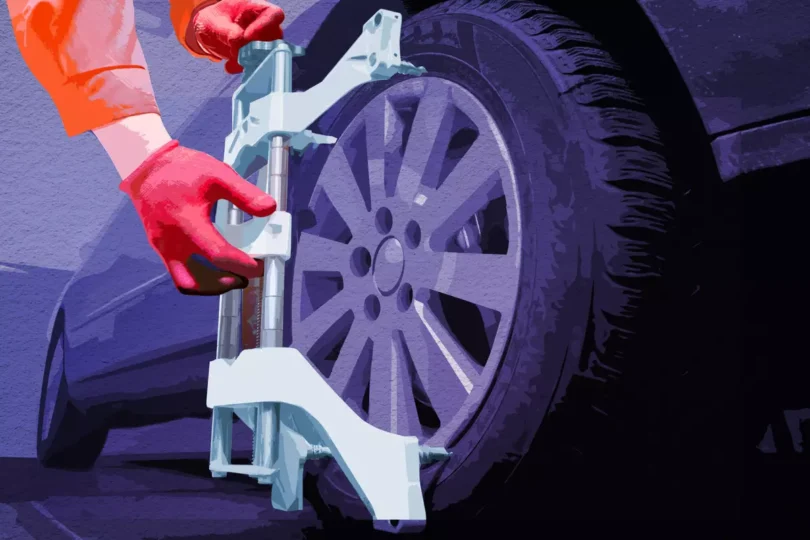 |
Maintaining a safe and well-functioning vehicle involves understanding the different components that make up its structure. When it comes to the connection between your vehicle and the road, tires, alignments, and axles play crucial roles. However, understanding the distinctions between these components can sometimes be confusing. In this article, we will delve into the world of tires, alignments, and axles, unravelling their functions and highlighting their importance in keeping your vehicle in top condition.
Tires: The Foundation of Vehicle Safety

Tires are the only points of contact between your vehicle and the road, making them essential for safety and performance. They serve multiple purposes, including providing traction, supporting the weight of the vehicle, and absorbing shocks from uneven road surfaces. To ensure optimal tire performance, it is crucial to understand their key characteristics and maintenance requirements.
1. Tire Types:
Tires come in various types, including all-season, summer, winter, and performance tires. Each type is designed to meet specific driving conditions and provide the best possible grip, handling, and traction. Choosing the right type of tire for your vehicle and the climate you drive in is vital for safety and performance.
2. Tread Depth and Wear:
The tread depth of your tires plays a significant role in maintaining traction on wet or slippery roads. Regularly inspecting your tire tread and ensuring it meets the minimum legal requirements is crucial for safe driving. Additionally, uneven or excessive wear can indicate alignment or suspension issues, necessitating prompt attention. Tire Reviews suggests replacing tires when the tread depth reaches 2/32 of an inch (1.6 millimeters).
3. Tire Pressure:
Proper tire inflation is essential for safety, fuel efficiency, and tire longevity. Underinflated or overinflated tires can affect handling, braking distances, and tire wear. Regularly check your tire pressure and maintain it at the recommended levels specified by the vehicle manufacturer.
Alignments: Keeping Your Vehicle on the Right Track

Wheel alignments are adjustments made to the suspension system of your vehicle to ensure that the wheels are properly aligned with each other and the road surface. Proper alignment offers several benefits, including improved handling, increased tire life, and enhanced fuel efficiency. Here’s what you need to know about alignments:
1. Signs of Misalignment:
Several signs may indicate that your vehicle is out of alignment. These include uneven tire wear, the vehicle pulling to one side, steering wheel vibration, or a crooked steering wheel when driving straight. If you notice any of these signs, it is crucial to have your alignment checked and adjusted if necessary.
2. Alignment Types:
There are three primary types of wheel alignment: front-end alignment, thrust alignment, and four-wheel alignment. The type of alignment required depends on the suspension and drivetrain configuration of your vehicle. A professional alignment service will determine the appropriate type based on your vehicle’s specifications.
3. Alignment Procedure:
During an alignment service, a qualified technician will use specialized equipment to measure and adjust the angles of the wheels. These angles include the camber (vertical tilt), caster (front-to-back tilt), and toe (inward or outward tilt). Proper alignment ensures that all four wheels are parallel and perpendicular to the ground, minimizing tire wear and maximizing vehicle stability.
Axles: The Power Behind the Wheels

Source: metamandate.com
Axles are critical components that transmit power from the engine to the wheels, allowing your vehicle to move. Understanding the basics of axles is essential for diagnosing and addressing potential issues:
1. Types of Axles:
Most passenger vehicles have two types of axles: the front axle, responsible for transmitting power and steering, and the rear axle, which transmits power to the rear wheels. In some vehicles, such as those with all-wheel drive or four-wheel drive, there may be additional axles.
2. Axle Maintenance:
Axles are built to be durable, but they still require regular maintenance to ensure optimal performance. This includes checking for leaks, inspecting CV (constant velocity) joints and boots, and lubricating the axles as recommended by the vehicle manufacturer. Timely maintenance can prevent axle damage and extend their lifespan.
3. Signs of Axle Issues:
Vibrations, clicking or popping noises when turning, or difficulty in turning may indicate axle problems. If you notice any of these signs, it is crucial to have your vehicle inspected by a qualified mechanic to diagnose and address the issue promptly.
Keeping Your Vehicle Safe

Understanding the key components of your vehicle, such as tires, alignments, and axles, is essential for ensuring safety, performance, and longevity. Tires are the foundation of vehicle safety, and proper maintenance, including regular inspections, tire pressure checks, and appropriate tire selection, is crucial. Alignments keep your vehicle on the right track, enhancing handling, tire life, and fuel efficiency. Axles transmit power to the wheels, allowing your vehicle to move, and regular maintenance can prevent potential issues.
By familiarizing yourself with these components and their functions, you will be better equipped to recognize signs of potential problems and take appropriate action. Remember, regular maintenance, inspections, and seeking professional assistance when needed are key to keeping your vehicle running smoothly and safely for years to come.




